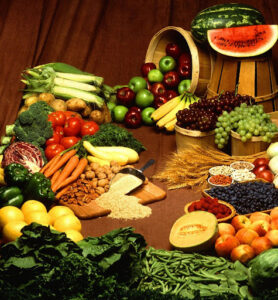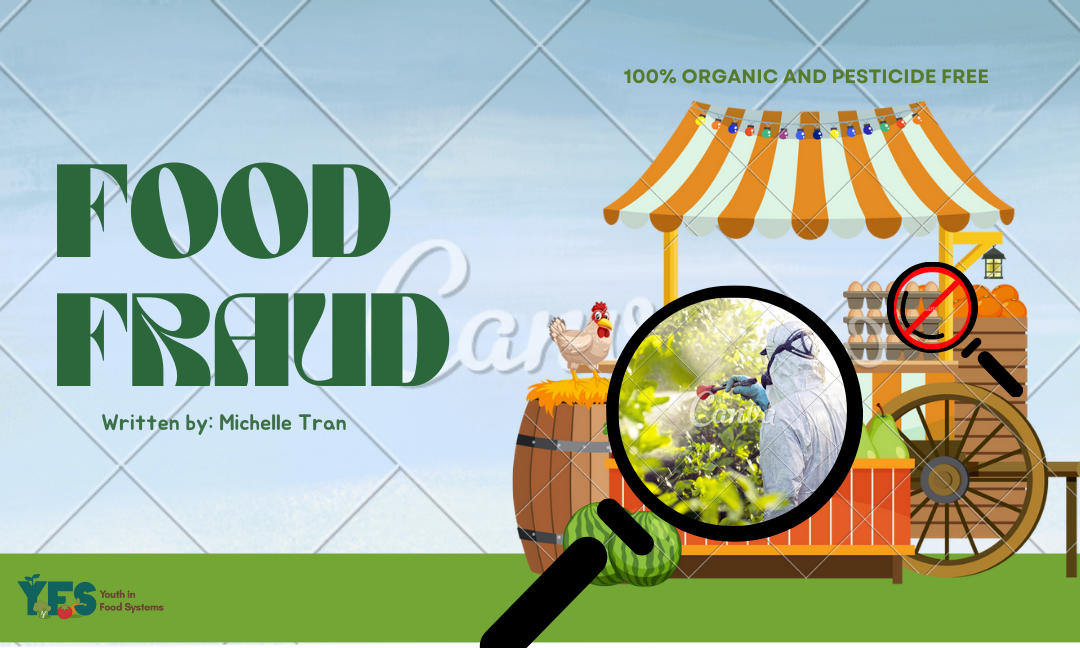Written by: Michelle Tran
Edited by: Anonymous
Designed by: Sargam
Published by: Maryam Khan
What is Food Fraud?
Food fraud is essentially misrepresenting food, causing consumers to be misled into purchasing a deceptive product.
Types of Food Fraud (Government of Canada, 2022)
Substituting – Replacing an ingredient or product with something of a different attribute, then claiming that there was no replacement.
Example: Horsemeat as a substitution for beef without being disclosed.
Adulterating or Diluting – Adding ingredients/elements and not disclosing them on a label.
Example: Organic fruit juice sold as dissolved water with artificial flavouring.
Mislabeling – Labelling a product that causes it to be misrepresented
Example: Fruits that are labelled as organic, however, they are not organic.
False Claims/Statements – claiming/making statements that make a product represent something it is not.
Example: Sodium-free products that still contain sodium.
Why is Food Fraud Important?
 It is important to recognize food fraud as it can pose a safety concern to consumers as unnotified allergens and toxins may not be disclosed during an incident of food fraud. Food fraud can also lead to a loss of trust between a consumer and marketer, impacting the economic status of the buyer.
It is important to recognize food fraud as it can pose a safety concern to consumers as unnotified allergens and toxins may not be disclosed during an incident of food fraud. Food fraud can also lead to a loss of trust between a consumer and marketer, impacting the economic status of the buyer.
Ensuring that consumers feel comfortable while shopping requires trust. If a business is committing food fraud, not only is it prohibited, but makes the consumer uncomfortable and hesitant to purchase from the brand.
Food fraud costs the global food industry around $10 and 15 billion dollars per year (Government of Canada, 2022). According to the U.S. Grocery Manufacturers Association, this affects about 10% of all commercially sold food products.
How Can Food Fraud Be Prevented?
Food Fraud is mostly reported in:
- olive oil
- honey
- dry spices
- fish
- fruit juices
- organic food products
Many organizations around the world are working to prevent food fraud. As food fraud grows, it puts many more people at risk of becoming victims.
Canadian consumers pay for the truth, and if businesses continue to be unreputable, it will destroy the food market further. Food fraud isn’t always easy to spot, but closely recognizing cases can help save the lives of you and those around you.
- Check labels

Determine any suspicious ingredients that the product may contain.
2. Examine the price
Ask yourself, is the product worth that price? If it’s too good to be true, it probably is.
3. Research the industry and product, and/or contact the company.
Consumer awareness encourages companies to be more cautious about what they’re putting in their products.
If you suspect a case of food fraud, report it here: Find out where to report a food complaint or concern – Canadian Food Inspection Agency
If you are a victim of food fraud, seek medical attention immediately, or dial 911.
Works Cited
Government of Canada. What is food fraud – Canadian Food Inspection Agency, 1 April 2022, https://inspection.canada.ca/food-labels/food-fraud/what-is-food-fraud/eng/1648661693364/1648661694161. Accessed 2 May 2024.
Government of Canada. How food fraud impacts consumers – Canadian Food Inspection Agency, 6 January 2022, https://inspection.canada.ca/food-labels/food-fraud/how-food-fraud-impacts-consumers/eng/1548444986322/1548445033398. Accessed 2 May 2024.

